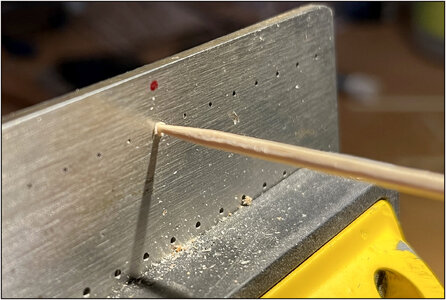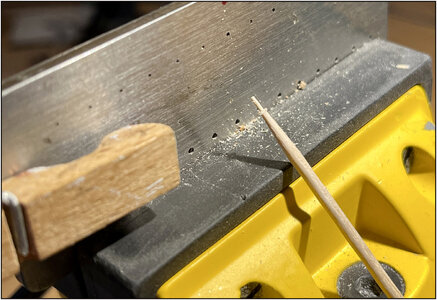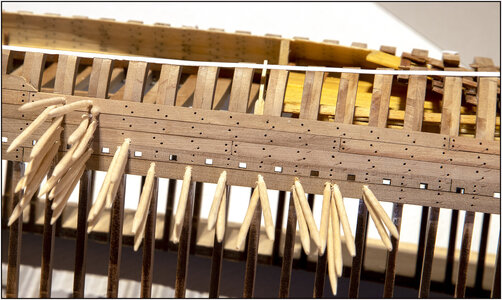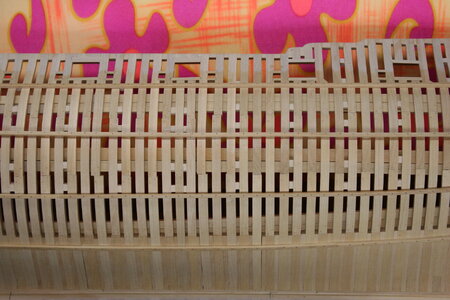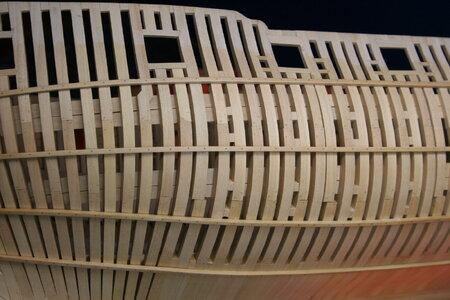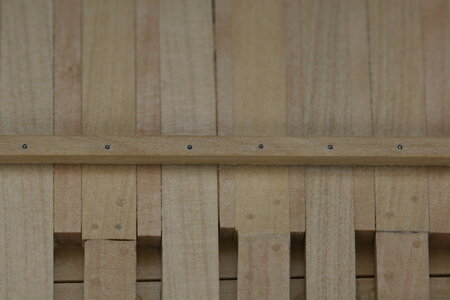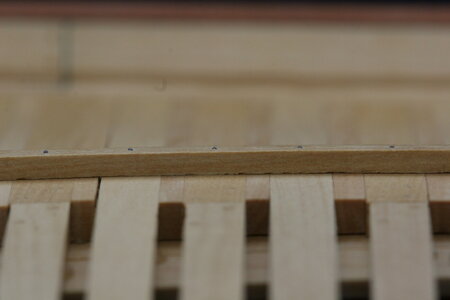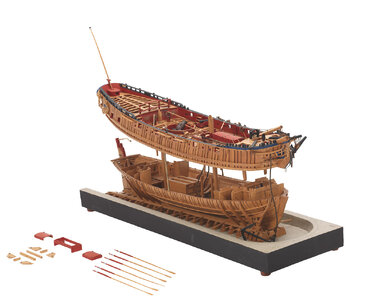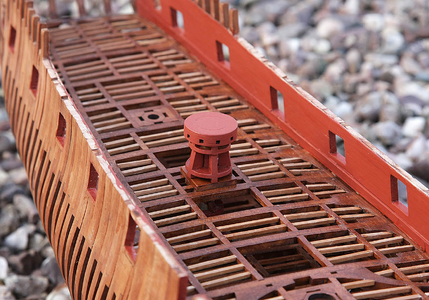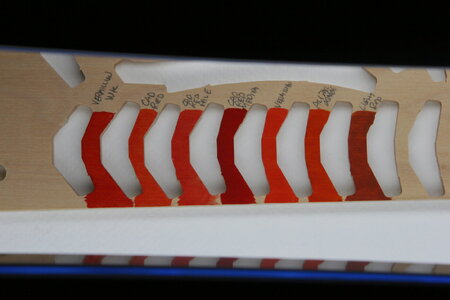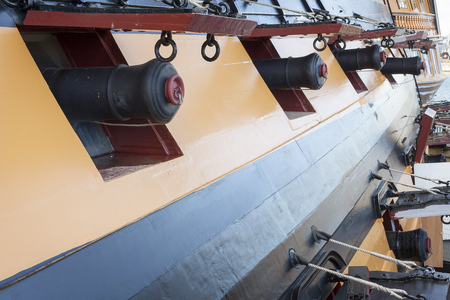And now, A Retrospective on what this relative newcomer (sorry, Ken, accomplished builder) has learned about trenails/treenails/trunnels.
1. Before you commit to anything on your ship - do a sample board with some SIZE to it. I sampled techniques, tested for size, material, finishes. All of it. But I did this in a very limited sense (a few short planks). What I failed to do was create a sizable sample board with hundreds of trenails and that would have been really helpful in making good choices.
2. Size matters. My goal was to get under 1 inch (25 mm) for wooden trenails. The best I could do with a drawplate (more about that in a moment) was about 1.1 inches (at scale that's 0.56-0.58 mm). Perhaps other accomplished builderscan make wooden trenails smaller than that on a drawplate but I couldn't swing it. If that is your goal, then bypass hardwood and use bamboo (I could make bamboo trenails down to 0.52 mm, but they were darker than the boxwood version and I didn't like that on the holly strakes). I think @Peter Voogt used bamboo toothpicks with a drawplate on his Bluenose and they seemed to work nicely (building at 1:72 I think???).
Anyway, 1.1-inch trenails (28 mm) look a bit oversized to my eye at 1:48. If you are building at a smaller scale and are shooting for historical accuracy, be sure to think this through. Of course, there is much to be said for an artistic (rather than historic) representation of trenails at smaller scales as we have seen on many models (including my own Vasa) to great effect.
3. And if you want to use a drawplate then don't even bother if you don't have a Byrnes drawplate (yes, I know, sadly he is gone). Other drawplates are garbage compared to his. And jeweler's drawplates for metals don't work on wood; they compress the metal down to size rather than shave it (which is what you want for wood).
3b. Speaking of metals...you can make brass/copper trenails very (!) small - but that's a look you may (or may not) like. As an aside, I have recently learned that French construction alternates metal and wooden fasteners - curious, but fun (which, by the way, is an apt description of the French in general). My fantastic son-in-law is French so no hate mail...
4. I insisted on using a drawplate to create my trenail stock IN BULK in order to add some efficiency to the installation process. Others have used a sanding technique (Tobias and Sasha come to mind, but I'm sure there are others) to 're-point' each trenail prior to installation. I believe this will create smaller trenails (really only limited by the size of the drilled hole) but THE EFFORT TO DO THIS SHOULD NOT BE UNDERESTIMATED. Hand-working 6000 individual trenails was beyond me!
5. There is an inherent tension to the process of trenailing. Namely, the collision of high concentration when it comes to marking and drilling tiny holes - and the tedium of marking and drilling tiny holes (never mind the tedium of filling all those tiny holes with pegs of wood). Maintaining an operational level of concentration for precise placement is not easy over extended periods of time. But taking breaks every five minutes means weeks/months of trenailing rather than days/weeks of trenailing. Again, test before you commit!
6. Finally, don't underestimate the hand skills needed for miniature trenails. I suspect most everyone on this site can do it - but it needs to be said.
I hope this Retrospective might be helpful to someone out there...
And please add your own experiences so we can all learn together!
A further method is the "syringe-method" that worked nicely for my maple deck with maple trenails:
I have tried to mass produce pear trenails this way but with very limited succes. A lot of burning/broken trenails, ending up with a syringe filled with wood. Clean up and start over. That was even for me too time consuming.
Several months ago @Maarten took the initiative to unite several interested modelers over here to buy the Byrnes drawplates collectively and so reducing the transportation and customs handling costs per buyer. That drawplate is now waiting patiently for me.



